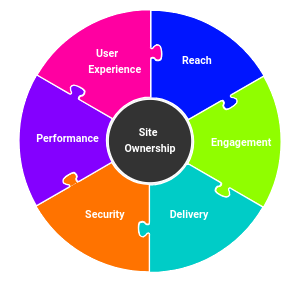
SEO stands for Search Engine Optimization. According to Moz.com, SEO is “a marketing discipline focused on growing visibility in organic (non-paid) search engine results”. They continue that it includes the “technical and creative elements required to improve rankings, drive traffic, and increase awareness in search engines.”
The technical components that they are referring to are ensuring that pages are linked correctly, pictures and pages have been “tagged” with information about them, and the site can be found and understood by Search Engines like Google and Bing.
The creative components that they are referring to are the use of certain terms throughout the website that are likely to trigger the Search Engines to know that this specific page has the answers that they are looking for.
However, for a firm to be truly effective in the world of SEO, they cannot just put terms on their page and tag pictures and be done with it—they have to walk a mile in their customer’s shoes. Proper SEO management allows this to happen.
Step 1: Walk a mile in your customers shoes
Your business has offerings, whether they be products or services—you are providing something that your customers want. However, are you sure it is the product that customers want? How can you be sure? Well, one way to do this is to track certain keywords for their volume to determine how often keywords that are relevant to your brand are being searched. Thus, if you are an auto parts store and you aren’t sure if you should put “used transmissions” or “old transmissions” on your website, you can track these two keywords to see which is used more—whichever one is used more, is how you should put it on your website. This ensures that more people will find your “used transmissions”, even if we all know they are “old transmissions.”
Step 2: Now walk a mile in your competitor’s shoes
After you have done your research on the keywords that have the most potential for you, its important to see what happens when you google them and to see if your competition comes up. If they don’t—you’ve got an opportunity. If they do, then you have to figure out if this battle is worth fighting and how you want to fight it, or differentiate yourself.
Step 3: Content is King
In today’s society, the most-effective businesses are creating more content to their website every day. The reason they are doing this is because this ensures that they will come up first on search engine rankings. Once they come up first, they are front and center in front of new potential customers with a recommendation to solve their customer’s problems—which is not a bad place to be.
Step 4: A Website Visit Does Not Put Any Money in the Till
After you have created a steady flow of potential customers to your website, it is time to start thinking about conversion. The most-effective way to think through this conversion is once again to walk a mile in your customer’s shoes. To do this, think about what they searched for, what they clicked on, and what would be a logical next step in their mind. Does it make sense at this point to “Schedule an Appointment” or does it make more sense to “Click here to Buy”, the answer is going to be different for every customer, but there is a right way to grow your business this way.
Step Forever: Use Data to Learn What Can be Improved
While the Digital Marketing World has had a ton of promise, the one thing that is certain about it is that it is the easiest way to test new ideas and see which ones attract attention. The ones that do not should be amended or deleted. The ones that do should be amplified. A truly-savvy organization in the 21st century is using their website as a laboratory to drive new customers every day.
Game on!

Yup, I agree with 'content…
Yup, I agree with 'content is a king'. If we make great content and has better information than any article, our article can reach easily the page One
Hi Ben, What an awesome…
Hi Ben, What an awesome article. The article is very helpful to me. I'll stay tuned for the next article from you.
John
SEO
Wow, your content is great! Love your laboratory comparison
Search engine marketing
Hey there,
I appreciate that your content is awesome. Gives a lot of information.
Some of them are my favorite as 1. content is king 2. use analytics data to learn what can be improved.
Thanks for sharing this…
Thanks for sharing this awesome article and yes you are right Content is king. I recently published an article which was fully optimized and the article directly emerges on the top 10 searches of google. Below is the link to the article: cloudways.com/blog/what-is-digital-ocean/. I did the optimization after visiting you blog and implemented some of the key points from your article and it worked out for me.
Add new comment